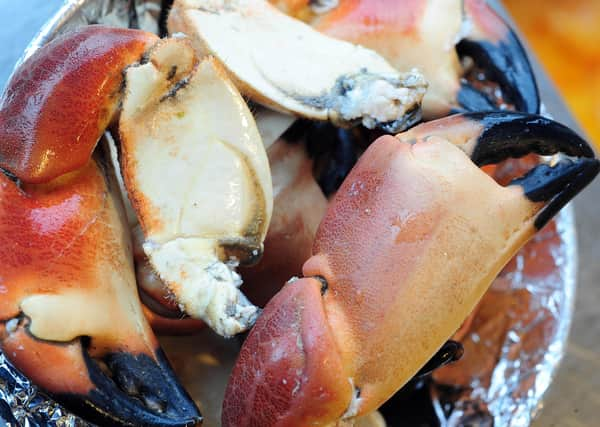Shellfish can be a real labour of love but the end reward is well worth it


We can meet friends for coffee, flyaway hair will soon be groomed and the fishing boats are back in our harbours.
It’s always a bit sad to see the small fishing fleet being craned out of the water for the winter but a joyous sign of spring when they return. It means a steady supply of fresh lobster and crab available throughout the country.
Advertisement
Advertisement
Cooking and preparing shellfish is a bit of a labour of love but the reward of sweet, luscious meat is well worth it. To ethically prepare lobster place it in a freezer for 20 minutes. This will cause it to go into a catatonic state. Bring a pan of water up to a rolling boil and season with a lot of salt – as saline tasting as the sea. Add the lobster and cook for about six minutes a pound. Remove claws and body. Smack the claws with a rolling pin to crack them and then remove the meat. Press the shell of the body and then pull back to remove meat. Crab is a bit more complicated – cook for eight minutes per pound and then cool. Lay it on its back and twist off the claws and legs. Press on the crab then remove body from shell. Spoon out the brown crab meat. Cut the main body in half and remove meat with a skewer. Crack the claws with a rolling pin and remove meat. You can buy great quality prepared crab meat from your fish supplier if you want to save time.
Don’t waste the shells after you’ve extracted the meat. Fry in oil, add aromatic vegetables, tomato puree and wine. Cover with cold water and simmer for a couple of hours. Strain and boil to reduce by half. This stock can be used for soups, pasta, risotto and a myriad of other dishes. It can be frozen and defrosted as you need it.
The shellfish stock is used in the first recipe this week – a crab and pasta dish with new season asparagus. Orzo pasta is widely available and is rice shaped. It’s perfect for this as it gets coated in the rich creamy sauce. Local asparagus is in good green grocers now and well worth using for its limited season. It adds a light, freshness to the decadent sauce and shellfish.
The other recipe is for lobster that’s boiled first and then finished in bubbling brown butter. It’s paired with grilled leeks and a lemon and parsley dressing – the perfect celebration of local shellfish and vegetables.
Advertisement
Advertisement
To source shellfish, go to your local fishmonger or fish van and they’ll be happy to get it for you. It’s been a difficult year for fishermen with the closure of restaurants so you’ll be supporting local industry while you enjoy your delicious shellfish.
Go to seafish.org for more information on sourcing and cooking fish and shellfish.